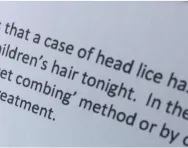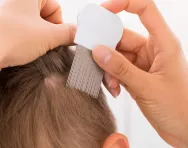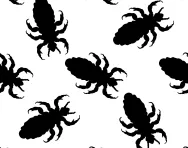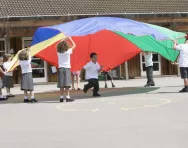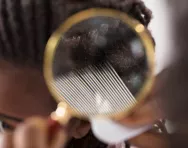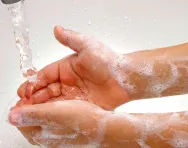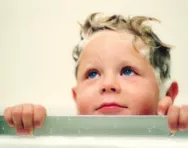Important update from TheSchoolRun
For the past 13 years, TheSchoolRun has been run by a small team of mums working from home, dedicated to providing quality educational resources to primary school parents. Unfortunately, rising supplier costs and falling revenue have made it impossible for us to continue operating, and we’ve had to make the difficult decision to close. The good news: We’ve arranged for another educational provider to take over many of our resources. These will be hosted on a new portal, where the content will be updated and expanded to support your child’s learning.
What this means for subscribers:
- Your subscription is still active, and for now, you can keep using the website as normal — just log in with your usual details to access all our articles and resources*.
- In a few months, all resources will move to the new portal. You’ll continue to have access there until your subscription ends. We’ll send you full details nearer the time.
- As a thank you for your support, we’ll also be sending you 16 primary school eBooks (worth £108.84) to download and keep.
A few changes to be aware of:
- The Learning Journey weekly email has ended, but your child’s plan will still be updated on your dashboard each Monday. Just log in to see the recommended worksheets.
- The 11+ weekly emails have now ended. We sent you all the remaining emails in the series at the end of March — please check your inbox (and spam folder) if you haven’t seen them. You can also follow the full programme here: 11+ Learning Journey.
If you have any questions, please contact us at [email protected]. Thank you for being part of our journey it’s been a privilege to support your family’s learning.
*If you need to reset your password, it will still work as usual. Please check your spam folder if the reset email doesn’t appear in your inbox.
Your step-by-step guide to dealing with headlice

What should you do when the letter comes home from school informing you that there’s an outbreak of headlice in your child’s class?
It’s almost certain to happen at some point, says Helen Maddin, Vosene Kids headlice expert.
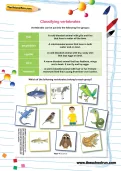

Download fantastic science resources today!
- Experiments And Science Fun pack
- Science Learning Programme for each school year
- All the instructions, questions and information you need
‘Headlice don’t jump, fly or swim; they spread by crawling from head to head, which is why children aged four to eight, who crowd together in the classroom and when they’re playing, are more likely to get them,’ she explains. ‘They’re a fact of life for primary school children.’
The days of the ‘nit nurse’ are long gone, which means it’s your responsibility to check your child’s hair for signs of an infestation, and treat them if you discover unwelcome visitors.
So what steps should you take if you think your child might have headlice?
1. Check your family
If you’ve been notified of an outbreak of headlice at your child’s school, or you’ve noticed them scratching, you’ll need to check them for evidence.
‘The best way to do this is to wash your child’s hair, then apply a leave-in conditioner,’ Helen says.
‘Use a wide-toothed comb to detangle their hair, then use a fine-toothed detection comb (available from pharmacies) to comb from the root of the hair to the tip.’
Wipe the comb on a tissue in between each stroke so you can see if you’ve trapped any lice, eggs or nits (empty egg cases).
‘It’s best to check the whole family, because headlice can spread so easily,’ Helen adds.
2. If you find headlice…
‘Headlice are small insects between 2.5 and 3mm long, and are usually found close to the scalp,’ Helen explains.
‘If you find any live headlice in your child’s hair, you should treat them for an infestation – even if you’ve just found a single louse.’
Your pharmacist will be able to recommend products to treat your child’s headlice infestation, whether you’d prefer to blitz them with a chemical treatment or use a gentler natural product.
Always follow the instructions closely for the best chance of getting rid of headlice. It’s also important to check that your chosen product is suitable: some aren’t recommended for young children or pregnant women.
‘You only need to treat the members of the family who have live lice in their hair,’ adds Helen.
Whichever method you choose to treat your child, you should keep checking their hair regularly over the next two weeks.
This is because headlice lay a new batch of eggs daily. They take about seven days to hatch – so even if you’ve got rid of the live lice, there may be more waiting to hatch.
3. Headlice and school
There’s no need to keep your child off school if they have headlice, as long as you’re treating them.
‘However, if your child has long hair, make sure you put it up for school, as long hair that’s not tied back can encourage headlice to spread,’ Helen advises.
4. Should you treat bedding and toys?
‘Headlice can live for 30 days on a person’s head, but rarely survive more than 24 hours off the scalp, so it’s unlikely that they’ll spread from contact with bed linen,’ Helen explains.
‘It’s certainly not essential to wash bedding, although you might want your child to keep their hairbrush to themselves.
‘You may also want to vacuum your child’s bedroom as a precaution.’
Headlice only feed on human blood, so you don’t need to worry about pets catching them from your child.
5. Preventing headlice
Once your child is clear of headlice, you can turn your efforts to helping prevent a new outbreak.
Vosene Kids Squeaky Clean 3-in-1 Shampoo and Conditioning Defence spray contains tea tree oil and citronella oil that help to repel headlice, and because they contain natural ingredients, they’re ideal for children’s hair and can be used regularly.
‘Sprays are ideal, because they can be left in the hair which makes them more effective,’ Helen explains.
‘Don’t use undiluted essential oils on the hair, because they may cause irritation.’
6. Keep checking
Despite the old wives’ tales, headlice have no preference for clean hair over dirty, or long hair over short, so it’s important to check your child’s hair regularly.
‘We would recommend having a general check every time you wash your child’s hair, as it’s easier to do it when it’s wet,’ Helen advises. ‘Concentrate on checking behind their ears and at the nape of the neck, as that’s where headlice are often found.’
7. When headlice won’t shift
Because of their size, life cycle, re-infestation rate and the growing problem of treatment resistance, it can be hard to get rid of headlice.
And even if you’ve successfully treated your child, they may keep coming back if others in their class have not been treated.
‘Keep using the prevention products, and keep an eye on your child’s hair for signs of a new outbreak,’ Helen says. ‘If you’re having difficulty treating headlice, speak to your pharmacist, as they can advise you on different options.’
For more expert advice on headlice visit the Vosene Kids Advice Centre

